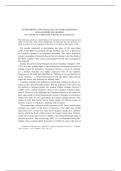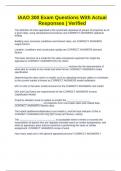Exam (elaborations)
ANTECEDENTS AND PARALLELS TO SOME QUESTIONS AND ANSWERS ON GENESIS IN VANAKAN VARDAPET'S BOOK OF QUESTIONS
- Course
- Institution
ANTECEDENTS AND PARALLELS TO SOME QUESTIONS AND ANSWERS ON GENESIS IN VANAKAN VARDAPET'S BOOK OF QUESTIONS The following article is a small tribute to the memory of my beloved teacher and father in the faith, Abp. Norayr Bogharian. It represents the first portion of a study in which we were en...
[Show more]




